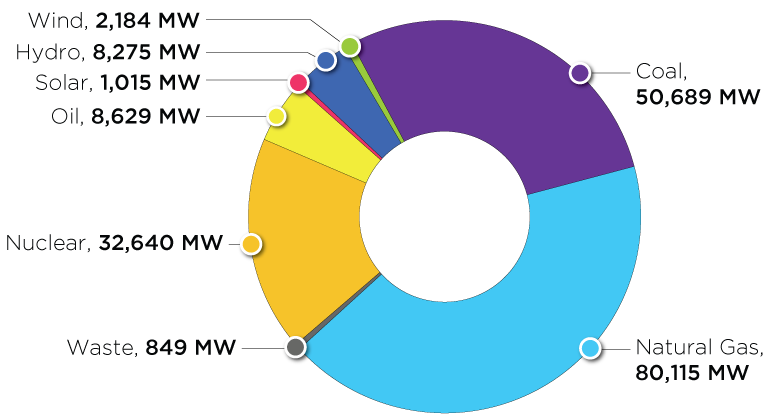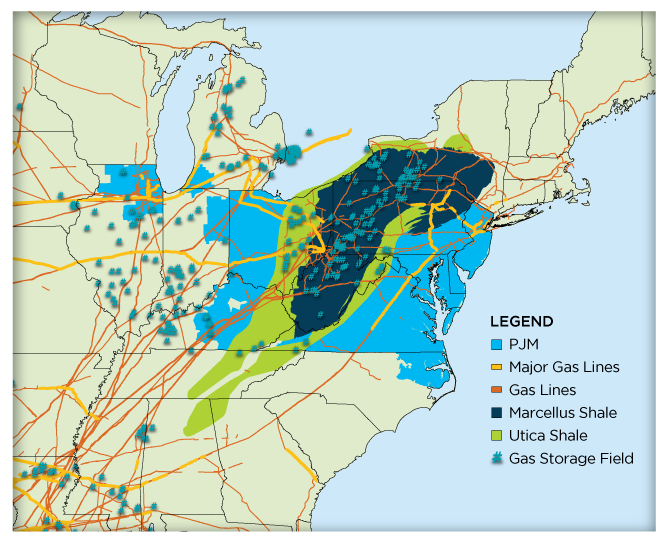Gas/Electric Industry Coordination
Natural Gas Generation in PJM
Over the past decade, PJM has seen an unprecedented shift in its fuel mix – the variety of fuel sources that generators in PJM use to produce electricity. The main change has been the increasing use of natural gas as a fuel source. For several decades, coal had been the dominant generation capacity resource because of its low cost and availability. Then, changing economics and more stringent environmental requirements for coal-fired generators, combined with the increasing abundance and low cost for natural gas, made gas a favored resource for new generation.
Currently, electricity generation is the largest consumer of natural gas in the U.S., followed by industrial, residential and commercial sectors (Source: EIA Natural Gas Annual Consumption). Within PJM today, natural gas generation development continues to increase, although at a slower pace than over the last five years. Natural gas is by far the largest generation type in the system totaling nearly 80 GW of generating capacity.

In 2015, natural gas surpassed coal as the leading fuel source for electric generation in the PJM footprint.
As of 12.31.2020

This number represents installed capacity, also referred to as “iron-in-the-ground,” inside of the PJM electrical territory. This number excludes external sales/purchases and does not necessarily represent generation controlled by PJM.
Natural Gas Production in PJM
A large portion of the PJM footprint has become a favorable location for natural gas supply because of the abundant Marcellus and Utica shale gas formations, which stretch from northern and western Pennsylvania to eastern Ohio southward to West Virginia. More importantly, the development of advanced and increasingly efficient hydraulic fracturing techniques has led to incredible production growth within this region. New extraction methods have provided better access to natural gas trapped within shale rock formations, allowing more to be recovered from previously untapped reserves. From 2007 to 2020, shale gas production in the United States grew by more than 1,300% according to the U.S. Energy Information Administration.
Natural Gas Storage in PJM
Just under half of all underground natural gas storage in the United States is located in PJM’s footprint. Gas storage in PJM is located primarily in western Pennsylvania, West Virginia and eastern Ohio. Storage plays an important role for consumers of natural gas. Natural gas storage allows gas pipeline operators, marketers and local distribution companies to meet variations in gas demand and becomes a critical daily supply source during the colder winter months.
The location of the storage in relation to the pipeline network and the end consumer is important because gas storage relies on geological formations: the location, as well as the number of storage fields and their useable capacity, depends on regional geology. Geologic formations, such as aquifers, depleted reservoirs and salt caverns, are able to store large amounts of natural gas within their porous rock structures. Depleted reservoirs, the most common type of storage in PJM, are seasonal: the gas is stored in spring, summer and fall (April through October) and then withdrawn in winter (November through March). Salt caverns can be drawn from anytime. Depending on the type of natural formation, there may be operational limitations on the amount and number of gas withdrawals in a given time period. Storage withdrawal and injections are also governed by the storage contracts and Tariff provisions.
